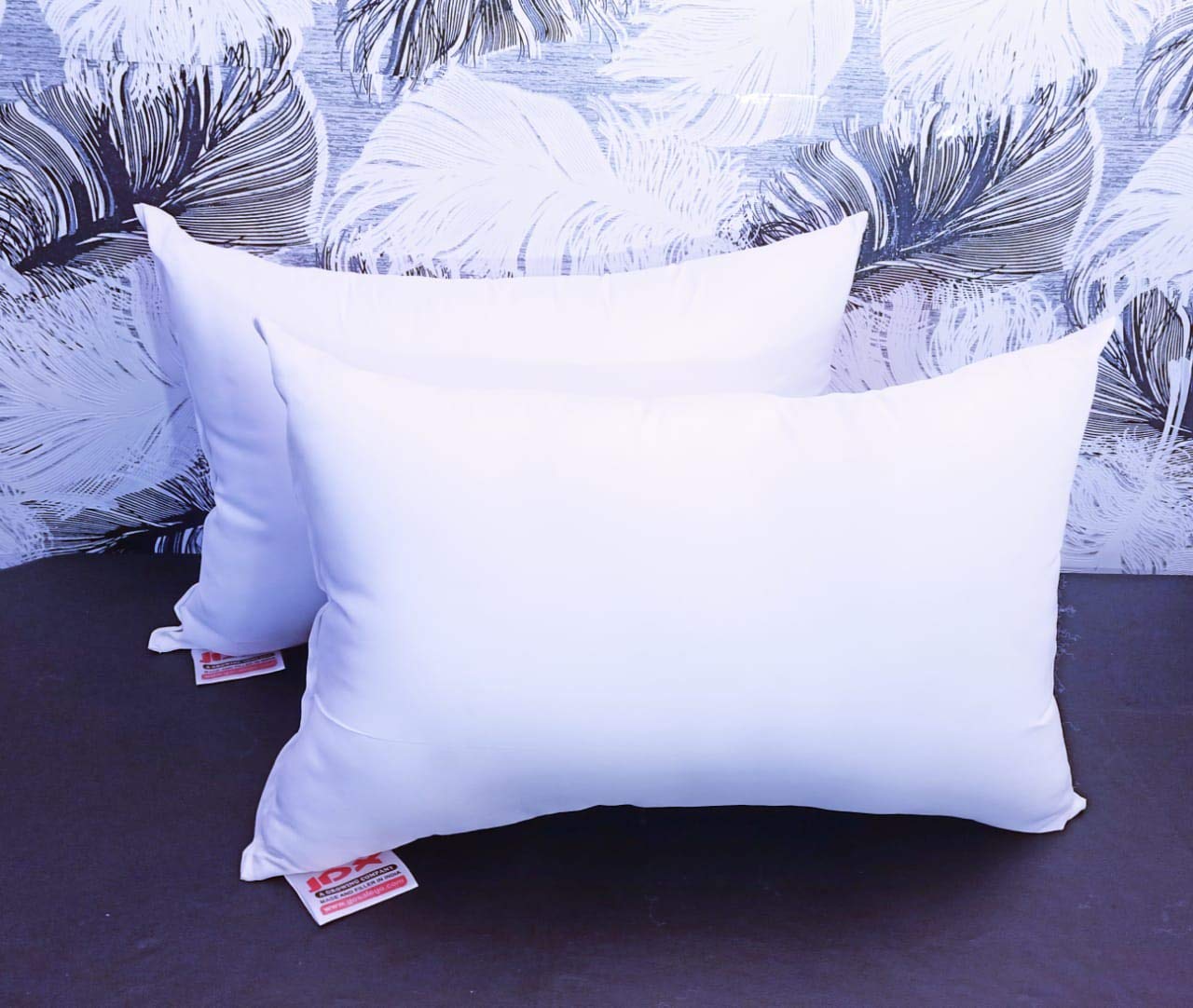After a long day, there is nothing better than laying your head against a soft, supportive pillow. However, over time, even the best pillow can stop providing you with a restful night’s sleep and start to give you neck pain and allergy symptoms. So as to prevent any unfavorable sleep effects, you should switch out your pillow every two years.
A pillow can get lumpy and dirty just like an old mattress can. In addition to your mattress and other bedding, pillows are a frequently forgotten bed component that requires regular replacement.
How Often To Replace Pillows?
Depending on how frequently you use your pillow, you should typically replace it every two years or less.
Although different types of pillows require changing at various times, it can be challenging to know when to do so. This is so because each type uses various materials.
You might think it’s unnecessary to change your pillow after having it for this long. Use your discretion to decide whether you need a new one as long as it is not exhibiting any of the aforementioned symptoms and you are still getting a good night’s sleep.
Why Should A Pillow Be Replaced?
1. Pillows Can Get Pretty Dirty
While we sleep, the oils and debris from our dead skin cells become embedded in our pillow and bed sheets (and not just the pillowcase—the actual pillow). A chronically dirty pillow can present various dangers, including:
- Illness-causing bacteria
- Allergy-causing dust mites
- Acne-causing oil and sweat
It is not necessary to completely replace your pillow because of the daily accumulation of dirt. Start with the pillowcase when determining how frequently you should replace your pillows. The best pillow care advice recommends washing your pillowcase every one to two weeks (or more frequently if you perspire a lot while you sleep). The pillow itself, what about it? Every three months, that needs to be washed.1
Some pillows, such as the Original Casper Pillow, can be thoroughly machine-washed. Other pillows made of different materials, however, might need different maintenance. For instance, spot cleaning is advised for memory foam pillows because they can deform in the washing machine. You can consult our article on how to wash pillows for additional advice on cleaning pillows.
2. Pillow Has Lost Its Shape
Our pillows typically lose their shape over time. If you fold, bend, or squeeze your pillows at night, this applies twice as much. Your favorite pillow may start to lose its ability to rebound to shape as quickly as it did when it was younger as time goes on.
If you’re using a pillow of lower quality, particularly one made of synthetic materials, this issue may arise fairly quickly. These are just a few of the warning signs to look out for in an old, misshapen pillow:
- Lumps – Sleeping soundly is impossible with a lumpy pillow. If the filling of your pillow has begun to bunch up in new and interesting ways, it’s time to call it quits. This is especially true if you’ve tried everything to restore your pillow to its former splendor but to no avail.
- Flatness – Pillows progressively lose their thickness over time. A flat pillow can cause spinal misalignment and cause you to wake up sore in the neck. Your neck will thank you later if you replace your pillow if it is beginning to resemble a plywood board rather than a cloud.
3. Pillow Just Isn’t Comfy Anymore
Your pillow’s job is to support and comfort you as you drift off to sleep. Whatever the experts may say about the lifespan of pillows, if your pillow is no longer serving its intended purpose, it’s time to retire it.
Various things can make you uncomfortable. While dirt and lumps are not good for a restful night’s sleep, they are not the only reasons why a pillow feels uncomfortable. Other reasons you may want to replace your old pillow include:
- Bodily changes – The human body is a dynamic entity. A pillow that once satisfied your needs may not do so any longer, regardless of whether you have sustained an injury or changed your lifestyle. Some people, especially as they age, require more neck support in bed, so changing your pillow over time will guarantee you sleep better at night in the long run.
- A new bed – The amount of support you require in a pillow may change if you recently switched to a new mattress that is firmer or softer or a bed that is a different size.
How To Know The Pillow Needs To Be Replaced?
There are a few telltale signs that you can pay attention to know if it’s time to trade out your old pillow for something fluffy and new:
Losing shape: A deflated, crooked pillow indicates that its life is about to end. It can help keep your pillow supportive for longer if you give it a manual fluff every morning. To help restore some of their shapes, some pillows, like the Coop Home Goods Pillow, can be dried on low heat for 15 to 30 minutes.
Smells or stains: Every time your pillowcase is changed, inspect the surface of your pillow for any fresh stains or odors. Try washing it if you discover any fresh odors or stains, either by hand with a mild detergent or in a machine. It’s time to purchase a new pillow if the old one no longer feels fresh despite cleaning.
Life changes: If you experience any injuries, aging, or other body changes, or if you purchase a new mattress that offers a different level of support, a perfect pillow can quickly turn into a pain. If they must change positions more frequently while sleeping, some people might even discover they require a different pillow. It’s time to find a new pillow if you start to experience neck pain or if your old one is no longer supporting you well.
Allergies: There’s a good chance your pillow is to blame if you notice that your allergies or congestion are getting worse when you wake up. Pet dander, pollen, and mold are just a few of the allergens that pillows can retain. You can get rid of allergens by washing your pillow, but eventually, it’s better to just get a new one.

Which Pillows Last The Longest?
The materials it is made of and how you use the pillow have a direct impact on how long it will last. A wide variety of materials, including memory foam, latex, down, and polyester, can be used to make pillows. Some of these materials typically last longer than others.
For example, if properly cared for, high-quality latex and memory foam pillows are thought to be very durable and can last for several years. In general, polyester pillows are the least resilient and need to be replaced sooner than two years. We’ve included a variety of pillow types in our rankings of the best pillows, from memory foam pillows to feather pillows, so you can see what’s available and how much it costs.
The AAFA advises using zippered pillow covers that have been certified as asthma & allergy friendly in order to protect pillows from dust mites and prolong their lifespan.
The Importance Of Regularly Replacing Pillows
It’s not like making your bed; you have a reason to make your bed when you change your pillow. The most alluring reason to switch out your pillows may be that a new one will make you more comfortable at night and eliminate bothersome neck pain. In addition to being more comfortable, changing your pillow is also a good idea for hygiene reasons because worn-out pillows can accumulate dust, sweat, hair, and dead skin cells that can result in uncomfortable side effects like allergic reactions. With a new pillow, you can sleep better, cleaner, and more comfortably.
Prevents Allergies
Your bed is the preferred residence of dust mites. Warm, muggy environments are where these creatures prefer to be. Even though they are not harmful, they can still have an adverse effect on your health because they can cause allergies to act up and cause symptoms like watery eyes, a runny nose, and itchy throats. These symptoms worsen the longer you are around them. These symptoms may then result in a sleepless night.
Improves Personal Hygiene
The average person wets their sheets with 26 gallons of sweat annually, according to Business Insider. Your pillows might be unsettling just to consider, much less lay your head on, what with the sweat, body oil, and hair. While regularly washing your pillows in the washing machine is beneficial, it is nearly impossible to remove the natural buildup that results from daily use. Stains might be removed, but eventually washing your pillow will no longer be of any assistance. The better option is to replace that worn-out, sweat-covered pillow with a fresh, clean one.
Leads To Better Sleep
A bad night’s sleep is a result of a bad pillow. You need to have enough support for your head and neck to sleep comfortably. A pillow offers the most support when it is brand-new, and more support means fewer morning aches and pains. Therefore, a new pillow might be the answer if you have neck pain or even back pain. Your body will receive the kind of rest it requires from a regularly changed pillow, enabling you to awaken feeling rejuvenated.
Conclusion
Even though changing pillows is a necessary but sometimes dreaded task, it still needs to be done. Spend some time finding a sturdy, high-quality pillow when you need to replace your current one. Once you have a pillow that is both comfortable and supportive, you must make sure to maintain it. A pillowcase should always be on your pillows and don’t forget to wash them every few months. You might be able to extend the life of your pillow by using these suggestions, but keep in mind that a lumpy, old pillow is no longer good for you or your sleep. To get more sleep, maintain better hygiene, and have a better night, change your pillows as needed.
